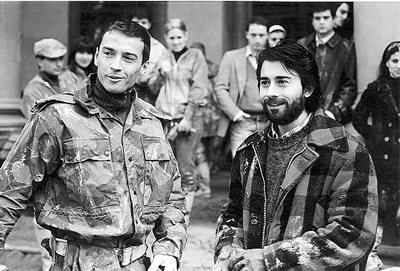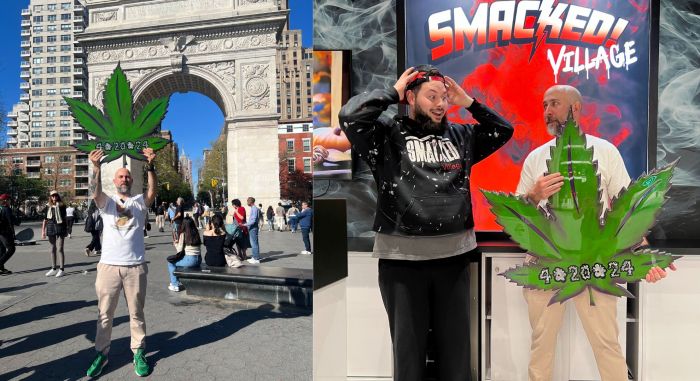Two-part Italian saga charts ‘60s brothers growing apart into adulthood
“The Best of Youth” is made in the spirit of its hero, a liberal psychiatrist who fights for the rights of the mentally ill and betrays his partner when she becomes a terrorist.
Moderation is generally a virtue in life, but it’s rarely reflected in great art. There’s nothing terribly wrong with “The Best of Youth,” but there’s nothing particularly compelling about it either.
Perhaps it’s unfair to compare current Italian cinema with its ancestors, but “The Best of Youth” undeniably echoes Luchino Visconti’s 1960 “Rocco and His Brothers.” The contrast isn’t flattering. Director Marco Tullio Giordana’s prosaic storytelling and flat images are no match for Visconti’s combination of neo-realist grit and operatic brio.
Beginning in 1966 and continuing through 2003, the year it was made, “The Best of Youth” follows the history of Italy through the lives of one family. Nicola (Luigi Lo Cascio) and Matteo Carati (Alessio Boni) are teenage brothers who share similar interests. Their paths diverge after they meet a mentally ill girl and help her escape from a hospital. Nicola temporarily drops out of school, travels around Norway and then becomes a psychiatrist. Matteo joins the army and enters the police force when discharged.
The youngest member of the family, Francesca (Valentina Carnelutti), marries Nicola’s friend Carlo (Fabrizio Gifuni). Due to his position at the Bank of Italy, Carlo becomes a target for terrorists. Unbeknownst to him, he’s very close to one. Nicola’s girlfriend Giulia (Sonia Bergamasco) is a member of the Red Brigades, a violent, left-wing organization. As the narrative progresses, it incorporates real events––a massive flood in Florence, anti-Mafia campaigns in Sicily, Italian soccer victories.
Made as a mini-series for Italian TV, “The Best of Youth” became a film when it was rejected for broadcast by the RAI channel but accepted by Cannes in 2003. However, it may not have benefited from a transfer to the big screen.
Apparently unintentionally, the 16mm cinematography looks drab and ragged. Watching a six-hour film in the theater—Film Forum is showing it in two parts, with separate admission—places more demands on an audience than watching it on TV. HBO, for example, chose not to distribute Mike Nichols’ lengthy “Angels in America” adaptation theatrically, unlike some of their other recent productions. For most people, a work this long would have to be a masterpiece to justify such concentration. “The Best of Youth” is not one.
It often feels like a soap opera, although Giordana was obviously aiming for an allegorical panorama akin to Salman Rushdie’s novel “Midnight’s Children.” The film manages to avoid baby-boomer narcissism and reducing the 1960s and 1970s to sex, drugs and rock-n-roll. Despite opening with a song by the Animals, it doesn’t overload the sound track with golden oldies or define the era through music. Even the costume design, makeup and hairstyles are relatively subtle.
Despite the length, “The Best of Youth” starts off well-paced. It has a few remarkable sequences––the wedding that closes the first part and a lengthy section set on New Year’s Eve, 1982, which cuts back and forth between a party and Matteo alone, caught up in depression.
Lo Cascio and Boni both give splendid performances. It’s heartrending to see Matteo gradually become colder and angrier. Boni never pushes his actions into outright pathology, but the character loses self-control all the same. Seemingly defeated, he pours his heart into work, screaming at spectators who gaze at a dead body as if they were watching a film. His breakdown is all the more horrible because it doesn’t seem to have any clear cause.
Nicola is a more likable character, but there’s always something childlike about him. He really enjoys working with children and the mentally ill because he loves play. His idealism fades with age, but some traces remain with him until the end.
After the New Year’s Eve party, “The Best of Youth” descends into a digressive, aimless final quarter, which shows the younger members of the Carati clan growing up rapidly. The film peaks early. The original structure, in which it would be shown in four 90-minute sections, might work better than the current one, especially since the original break points are very obvious. The ending, which aims to link the family’s grandchildren to Nicola’s 1960s adventures, misfires by imposing a cyclical conclusion on a linear story.
“The Best of Youth” comes with a long list of literary and cinematic precursors. In addition to “Rocco and His Brothers,” it’s reminiscent of Edgar Reitz’s 25-hour mini-series “The Second Heimat,” an exploration of youth in 1960s Germany. Like “The Best of Youth,” “The Second Heimat” shies away from received wisdom about the period. Unlike it, Reitz’s film really does have enough length and depth to rival an epic novel.
It’s surprising that Miramax picked up “The Best of Youth.” Their favorite European films tend to be middlebrow Oscar-bait like “Amelie” and “Life Is Beautiful.” It’s less surprising that they owned the rights for 18 months before releasing it.
If this film represents the best contemporary Italian cinema, the nation has fallen a long way off since the debuts of Pier Paolo Pasolini, Marco Bellocchio and Bernardo Bertolucci in the early 1960s. While European TV has produced many fine films, “The Best of Youth” would have been better left for the small screen.
gaycitynews.com



































